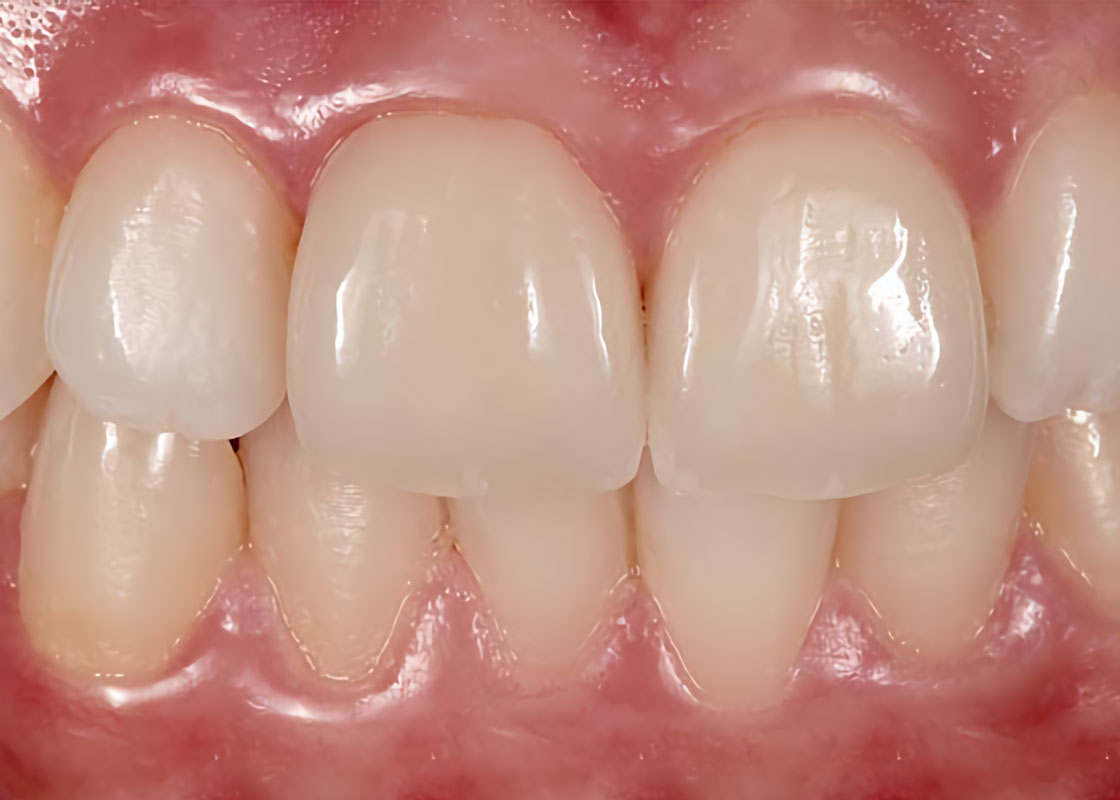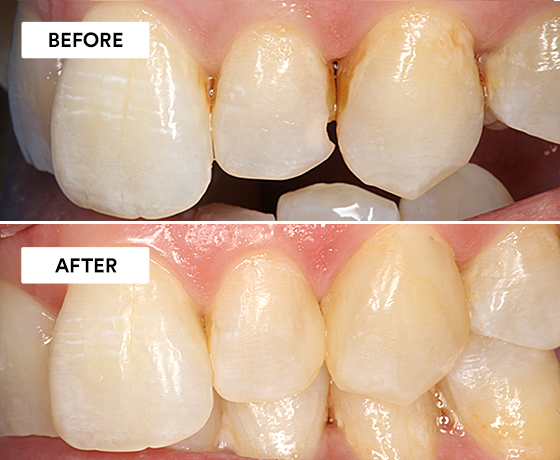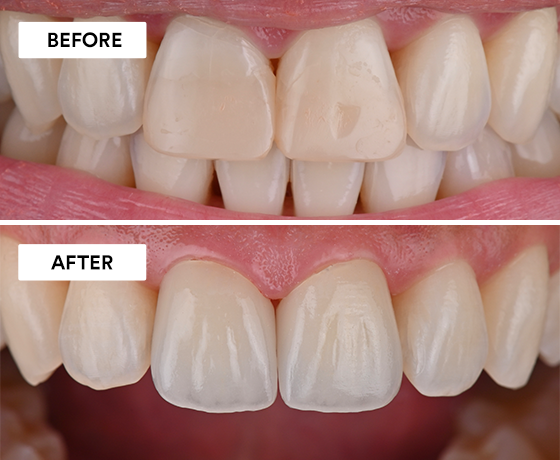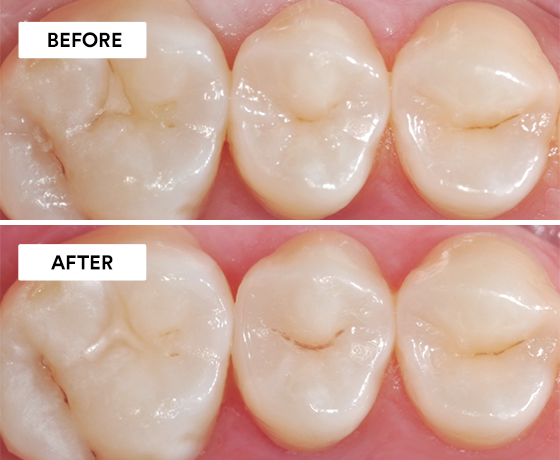Clinical Case: Is it possible to do more with less? Cracking the chameleon effect
Using 3M™ Filtek™ Easy Match Universal Restorative.


Simplifying cementation procedures without compromising bond durability and esthetics – this is what we all want. This article reveals how to do it!
Is it possible to simplify indirect anterior restoration procedures without compromising restoration longevity and esthetics? According to my personal experience and scientific studies, it is – provided that suitable materials are used. A material combination that has proven its worth in the context of placing glass ceramic restorations is 3M™ Scotchbond™ Universal Adhesive and 3M™ RelyX™ Ultimate Adhesive Resin Cement1-3. The following clinical case illustrates the simplified procedure and provides evidence for the great long-term performance of the selected materials.

21-year old dental student unhappy with the composite restorations on her maxillary central incisors, which had already been replaced several times due to fractures and discoloration.

The patient expressed the desire to receive restorations that are stable over time and highly esthetic.

The old restorations were removed and, as large amounts of enamel were still available, it was decided to place a crown and a veneer made of feldspathic porcelain.

Situation after conservative tooth preparation: most of the structure is still covered by sound enamel favorable for adhesive restoration procedures.

Feldspathic crown and veneer on the model.

The restorations have a very high translucency.

Crown ready for try-in.

Veneer ready for try-in.

Application of 3M™ RelyX™ Try-In Paste (Translucent) into the veneer.

Try-in of the crown and the veneer.

Conditioning of the restorations’ intaglio surfaces with hydrofluoric acid gel (PORCELAIN ETCHANT, 9.5% HF, BISCO) according to the manufacturer’s instructions for use.

Application of 3M™ Scotchbond™ Universal Adhesive to the etched ceramic surfaces. It should be allowed to react with the substrate for 20 seconds and treated with a gentle stream of air to ensure that the solvent evaporates completely.

Isolation of the working field with rubber dam.

Etching of the enamel on the maxillary left central incisor with phosphoric acid (3M™ Scotchbond™ Universal Etchant) for 15 seconds.

Application of 3M™ Scotchbond™ Universal Adhesive to the rinsed and dried tooth surface according to the manufacturer’s instructions.

Situation after pre-treatment of the adjacent tooth in the same way, application of 3M™ RelyX™ Ultimate Adhesive Resin Cement into the restorations, restoration placement, excess removal with a sponge pellet and covering of the margins with glycerin gel to avoid oxygen inhibition. The cement was finally light-cured for 20 seconds per surface.

Esthetic treatment result one week after restoration placement.

Beauty shot stressing the natural appearance of the restorations.

Situation six years after restoration placement.

This case shows that despite the use of only two components for adhesive cementation – a single-bottle universal adhesive and an adhesive resin cement – great treatment results can be obtained. The patient is still happy with the functional and esthetic result and clinically, there are no signs of marginal degradation or discoloration.
References
[1] Fasbinder DJ, Neiva GF, Dennison JB, Heys D, Heys R: Clinical Evaluation of CAD/CAM resin nano ceramic and leucite-reinforced glass-ceramic onlays. AADR 2016, Los Angeles, Abstract No. 254.
[2] Vogl V, Hiller KA, Buchalla W, Federlin M, Schmalz G. Controlled, prospective, randomized, clinical split-mouth evaluation of partial ceramic crowns luted with a new, universal adhesive system/resin cement: results after 18 months. Clin Oral Investig. 2016 Dec;20(9):2481-2492.
[3] 3M RelyX Ultimate Adhesive Resin Cement: 5-year clinical performance. THE DENTAL ADVISOR, Volume 34, Number 2, March-April 2017.

Using 3M™ Filtek™ Easy Match Universal Restorative.

Using 3M™ Imprint™ 4 Light VPS Material, 3M™ Intra-oral Syringe, 3M™ Imprint™ 4 Heavy VPS Material, 3M™ Protemp™ 4 Temporization…

Using 3M™ Scotchbond™ Universal Etchant, 3M™ Scotchbond™ Universal Adhesive, 3M™ Elipar™ DeepCure-S LED Curing Light, 3M™ Filtek™ One Bulk Fill…